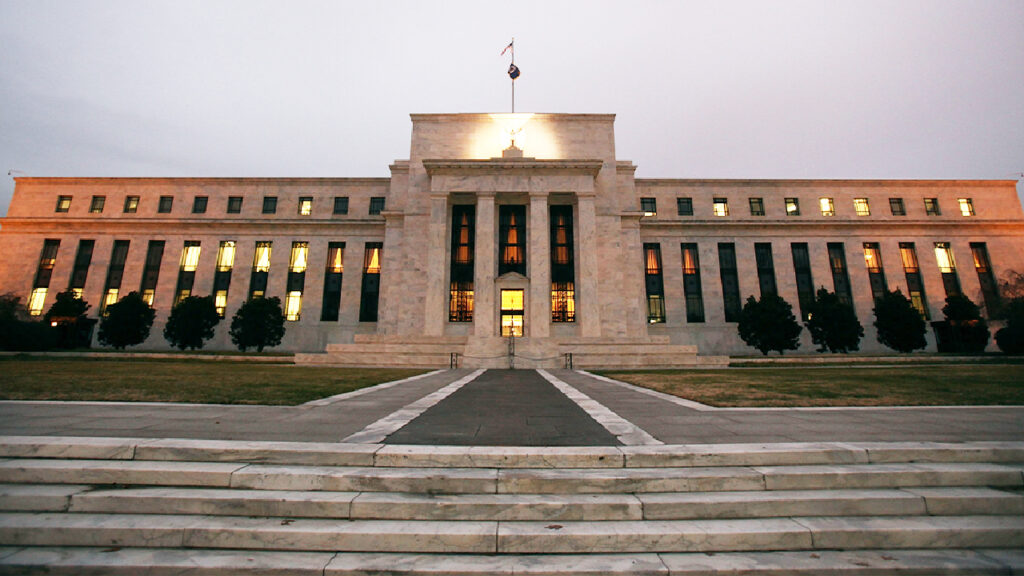Markets
Wall Street Increases T-Bill Holdings, Reduces Fed Deposits
Wall Street Decreases Deposits in Fed Program.- Wall Street’s reduced utilization of the Federal Reserve’s borrowing program indicates that efforts to replenish government reserves after the debt-ceiling dispute have not disrupted the markets. Instead, analysts suggest that funds are redirecting their focus towards purchasing new Treasury bills issued by the government, as it aims to borrow up to $1 trillion by year-end. This shift in strategy may alleviate concerns surrounding a surge in short-term bond supply and its impact on market volatility and government funding costs.
On Thursday, the Federal Reserve’s reverse repurchase agreements facility, which borrows from money-market funds and returns the funds the following day in exchange for securities like Treasurys, experienced its largest decline in approximately six months. The reverse repo level dropped below $2 trillion for the first time since June 2022, having peaked above $2.5 trillion at the end of the previous year.
The diminishing use of this program offers hope for the smooth flow of funds in short-term markets and mitigates potential risks to the stock market rally. There were concerns that money-market funds would continue withdrawing deposits from banks and depositing them at the Fed, thereby adding stress to the financial system.
Joseph Brusuelas, principal and chief economist at RSM US, expressed optimism, stating, “The issuance has gone about as well as anyone could have imagined. That doesn’t mean it’ll continue that way, but so far, Wall Street is handling the tsunami of bills.”
Get News WSJ | Wall Street Journal 2-Year Subscription for $480
Previously, money-market funds allocated a significant portion of their nearly $5.5 trillion in assets to the Fed, aiming to earn substantial fees from secure, daily transactions. With fewer Treasury bills available, their buying opportunities dwindled. However, now that yields on Treasury bills have risen, money-market funds have an incentive to invest in them. The government’s recent one-month and two-month bill auctions offered investment rates of 5.113% and 5.206%, respectively, surpassing the reverse repo rate of 5.05%.
Analysts anticipate an increase in short-term yields when the majority of new bill issuances occur later this month. Brusuelas noted, “There’s definitely some worries—the local and regional banks started to break when the 2-year yield breached 5%.”
Despite the rebound in the Treasury General Account balance to around $135 billion, it remains well below the targeted $600 billion for the end of September. After the debt-ceiling deal, Wall Street anticipated the Treasury Department to issue over $1 trillion in short-term debt. Extraordinary measures enacted during the debt-ceiling dispute and lower-than-expected tax revenues depleted the government’s coffers.
The Treasury Department aims to gradually rebuild its balances and set a target of $425 billion for the Treasury General Account balance by the end of June. Wall Street banks view the reverse repo as a sufficient buffer for the influx of new bills, and the Treasury Department emphasized its ability to manage debt-limit episodes without market repercussions.
Get WSJ Print Edition Subscription 1 Year for $318
While some analysts believe that the decline in reverse repo balances could be temporary, corporate-tax payments might have influenced the $117 billion drop on Thursday. Corporations typically withdraw cash from money-market funds to fulfill tax obligations on June 15. Future reverse repo data will be closely monitored to determine whether this decline marks a promising trend or proves to be transitory.
It’s important to note that the reverse repo rate is mechanically tied to the federal funds rate target set by the Fed. If policymakers decide to raise rates at the upcoming July meeting, yields on short-term Treasurys may need to exceed 5.3% to continue attracting money-market funds away from the facility.
While marginally higher government borrowing costs may be less concerning, analysts highlight the potential risks of a bottleneck in short-term lending markets that serve as the foundation of the financial system. If bank liquidity declines too rapidly during the TGA refilling process, the Fed may need to intervene to support the markets while simultaneously reducing its balance sheet—a policy stance that deviates from the norm.
Steven Kelly, a researcher at Yale University’s program on financial stability, warns that insufficient cash in the appropriate places at the right time could lead to surges in short-term rates. An episode of low liquidity in September 2019 resulted in an unexpected rate spike.

